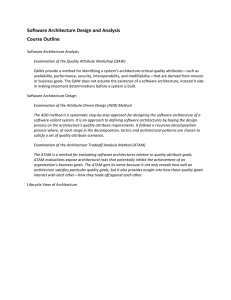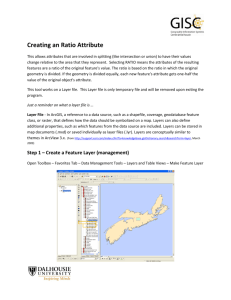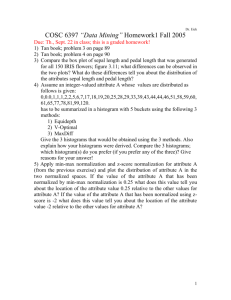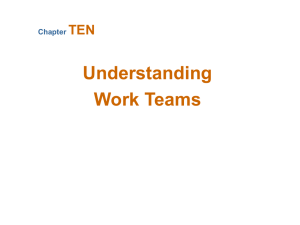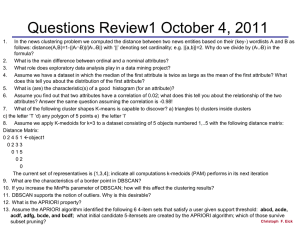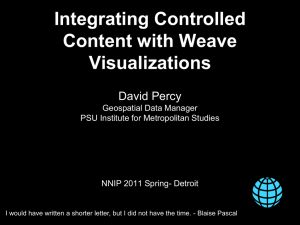Pedigreed Attribute eLicitation Method (PALM)
advertisement
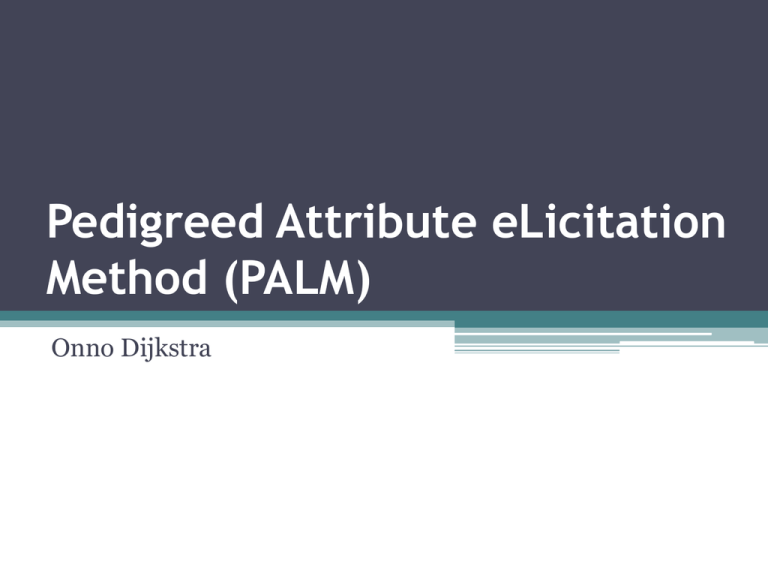
Pedigreed Attribute eLicitation Method (PALM) Onno Dijkstra Authors • P. Clements • J.D. McGregor • L. Bass Research and development center at Carnegie Mellon University, established in 1984 by the U.S. Department of Defense. Clements, P., McGregor, J.D., & Bass, L. (2010). Eliciting and Capturing Business Goals to Inform a Product Line's Business Case and Architecture. Proceedings of the 14th international conference on Software Product Lines: Going Beyond, 393-405. doi:10.1007/978-3-642-15579-627 Origins • Problem: one of the major causes of systemdevelopment problems and failure is the omission of important requirements or the inclusion of unreasonably rigid requirements. • Solution: relate requirements to business goals in a systematic way. Origins (2) • The method's name is derived from the outcome of quality attribute requirements with a pedigree rooted in business goals. • PALM uses: ▫ the standard business goal categories of ATAM. ▫ the concept of Quality Attribute Scenarios for Business Goal Scenarios. Purpose • PALM facilitates better capture and expression of high-pedigree, architecturally significant requirements (Clements et al., 2010). Tying business goals to architecture by using quality attribute requirements. Process steps 1. 2. 3. 4. 5. PALM overview presentation Business drivers presentation Architecture drivers presentation Business goals elicitation Identifying potential quality attributes from business goals 6. Assignment of pedigree to existing quality attribute drivers 7. Exercise conclusion PDD PDD (2) Example • Business goals ▫ Easy to maintain system ▫ Fast responding system ▫ Reduce costs • Architecture drivers ▫ Security ▫ Database-driven • Quality attribute requirements ▫ Maintainability ▫ Performance • Non-architectural solutions ▫ Lowering the facility’s thermostats in the winter ▫ Reducing employees’ pensions Related literature • Software Engineering Institute (SEI) developed and published a series of architecture-centric methods. ▫ Quality Attribute Workshop (QAW) for eliciting and articulating detailed quality attribute requirements for a system. ▫ Architecture TradeOff Analysis Method (ATAM) relies on stakeholder participation and scenario generation to gather data. ▫ Standard business goal categories. Questions?
